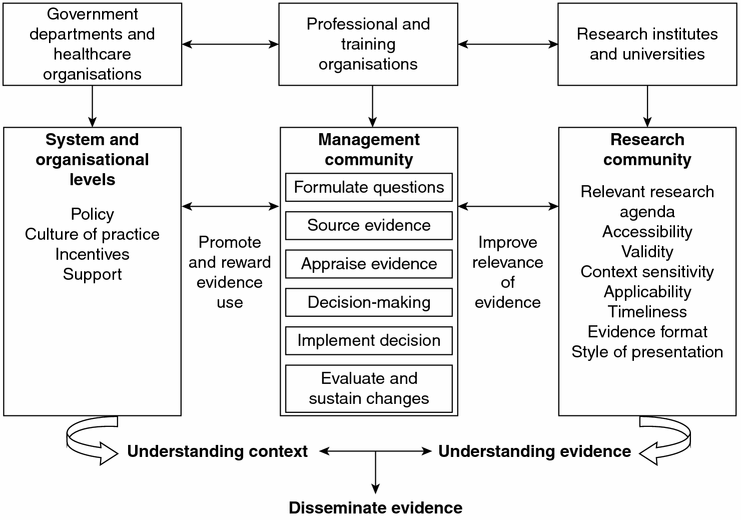Table Of Content

We also included an ‘Other’ category to code any content that did not fit within the framework, and then inductively analysed this content to capture additional sub-themes from the consultant data. Research is important to the profession and should play a role in every design project, particularly in the healthcare market. Credible design research will continue to elevate the profession and strengthen the credibility of design practitioners and firms who can successfully conduct a research program. Among the key areas of challenge are the gap between the producers of scientific evidence and its intended consumers and the lack of standardized terms, definitions, metrics, and measurement tools that are commonly accepted and understood by designers.
A building that's ready for anything
UTA leads Excelencia’s network as one of only 39 colleges and universities to have earned the Seal of Excelencia, a national certification for institutions that strive to go beyond enrollment to intentionally serve Latino students. Seal-certified institutions represent less than 1% of colleges and universities yet enroll 15% and graduate 17% of all Latino students. They also lead the way by implementing evidence-based practices that ensure Latino students thrive on their campuses. It is hoped that the resulting guidelines for designers be straightforward enough to apply to interior design practice without sacrificing the elements essential for the thorough scientific evaluation of evidence. Creating high-quality learning environments begs the question, how do we know that what we do when creating high-quality learning environments affects how students learn?
Outcomes
This approach is now critical for the design, production and operation of urban, work, retail, health, learning, transport, aged care and cultural spaces—anyplace where the built environment can have a real and significant impact on an occupant’s experience and performance. This toolkit, developed by the Center for Health Design is to assist in the design of a built environment that supports workflow, procedures, and capability while ensuring the safety of patients and staff. At Kahler Slater, we have found the EBD Wheel very helpful in our efforts to increase designers’ and clients’ knowledge of EBD issues and in fostering clients’ understanding of the negotiated complexities that must be navigated in the course of the healthcare design process.
Helping McMaster University Adapt its Buildings for the Future
Magda Mostafa Honored With Friendly and Inclusive Spaces Award - ABOUT US EDITOR'S NOTE About Us The Cairo Review of
Magda Mostafa Honored With Friendly and Inclusive Spaces Award.
Posted: Mon, 19 Jun 2023 07:00:00 GMT [source]
At HMC Architects, we understand that an efficient, calming, and beautiful healthcare facility is one that not only optimizes areas used to treat and support patients, but also earns a profit. Having the EDAC certification shows your clients and team members that you have a method for developing design solutions that are rooted in research to help achieve the desired goals and improved outcomes. Four consultants were of the view that junior doctors should not practice SDM due to their junior level. One consultant reported that junior doctors sometimes played a patient advocate role because they “often have an insight into some of those other levels [of patient care]” (C2). Another consultant considered providing junior doctors “the opportunity to be more involved in that [SDM] discussion” (C7) but cited time constraints as a barrier.
Two studies cited in the report indicate that between 44,000 and 98,000 people die each year in the United States as a result of medical errors. The national cost to the economy of these errors is between $17 billion and $29 billion. Since the release of the Institute of Medicine's report, a number of successful initiatives have been launched to help hospitals change their cultures and care processes to produce safer health care environments with fewer medical errors. The most recent AIA guidelines for new construction stipulate that all patient rooms be private7. The study had three key research questions, and four major themes were identified around those questions. The themes, sub-themes, and links to the research questions are summarised in Table 2.
MSi, a higher degree research student, developed and delivered the EBM-SDM training course with two other authors (MSt, AD). MSi also developed the interview schedules (with FR, AD, YZ) and conducted the interviews. MSi has training qualifications in adult education and qualitative research methods, including group and individual interviewing techniques.
Availability of data and materials
With over twenty years’ experience as an architect, he also holds a PhD on the evidence-based design of performative architectural space. Darragh specialises in post-occupancy analysis and has developed a unique set of research tools to help us understand the way people interact with the environments that we occupy. His current research focus is on the use of new technologies in the design of care facilities for dementia and palliative-care residents. Research-informed design (RID) is a less-developed concept that is commonly misunderstood and used synonymously with EBD, although they are different. It can be defined as the process of applying credible research in integration with the project team to inform the environmental design to achieve the project goals. The most effectual and impressive healthcare facilities are created using design plans that balance evidenced-based research results with experiential results.
Aged Care

In this study, pre- and post- workshop observations of doctors’ skills in SDM were assessed via recorded consultations and pre- and post- workshop attitude questionnaires. More recently, a scoping review of 23 studies found that while there has been increasing recognition by educators of the interdependence between EBM and SDM, only a minority of included studies explicitly incorporated EBM and SDM into training content [8]. When building or renovating a medical care facility to best support patients and staff, consider evidence-based design. Evidence-based design is the use of research studies, in-depth interviews with staff and patients, and outcome data to create a more effective healing environment. By taking a methodical, multi-step approach that uses credible research and reliable data, you’ll identify the design elements and processes that will have a demonstrable, positive impact on patients and your staff.
Evidence-Based Design Influences Interior Design - Spaces4Learning
Evidence-Based Design Influences Interior Design.
Posted: Mon, 01 Jul 2013 07:00:00 GMT [source]
In our study, more senior consultants appeared to dominate the medical workforce hierarchy and exclude junior doctors and patients from decision-making. These consultants believed that decision-making should be underpinned by their experience, knowledge, and their communities of practice. Thus, they did not prioritise decision-making linked to EBM and SDM and consequently educational opportunities for junior doctors under their supervision were reduced. This has been reported to be particularly evident in surgical specialties, where decision-making is dominated by senior surgeons’ experience rather than evidence [46].
When you understand the needs of everyone, you’ll apply only the most effective evidence-based design to your healthcare facility. Healthcare Providers You support new ideas in healthcare design that align with organizational goals and are likely to achieve the desired results. Academics/Researchers/StudentsYou are on top of the most significant, emerging discipline within the healthcare design profession and can help carry the teachings forward. Engineering & Construction ProfessionalsYou understand the importance of research-based design decisions and can maintain the integrity of these decisions during the engineering and construction processes. Product ManufacturersYou use research to inform the product development process and support improved outcomes in healthcare setting. He is also a principal of Architectural Research Consultancy and spent five years as founding director of the Spatial Research Group at Monash University, Melbourne.
Evidence-based design is part of the larger movement towards evidence-based practices. Ergonomics.Patients and staff in healthcare settings benefit from improved ergonomic designs of furniture and equipment. Among patients, injuries such as falls decrease in environments that are designed from an ergonomically conscientious perspective. Patient comfort during medical procedures and hospital stays is improved with thoughtfully designed furnishings.

No comments:
Post a Comment